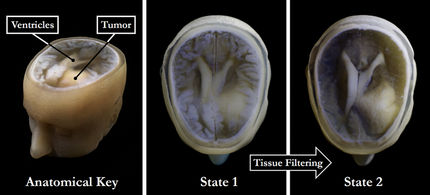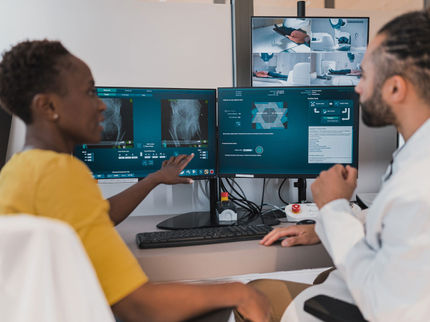World's first total-body PET scanner takes a big step forward
The UC Davis-based EXPLORER consortium, which aims to build a revolutionary total-body PET (positron emission tomography) scanner, has announced the selection of two industry partners to help build the prototype device. They are United imaging Healthcare America, a North American subsidiary of Shanghai United Imaging Healthcare, and SensL Technologies of Cork, Ireland.
Positron emission tomography, or PET, scanning uses short-lived radioactive tracers to show how organs and tissues are functioning in the body, while magnetic resonance imaging (MRI) and computed tomography (CT) scans mostly show anatomy. PET scans are widely used to diagnose and track a variety of illnesses, including cancer, heart disease and Alzheimer's disease.
The EXPLORER scanner will have over 560,000 detector elements and can view all organs of the body simultaneously, with a 40-fold increase in effective signal over current technology. That would both improve image quality and reduce radiation exposure to patients over conventional PET scanners, which can only image a small segment of the body at a time.
Impact on diagnostics and treatment
Total-body PET has the potential to impact clinical diagnostics, enable new fields of research and facilitate development of cures for a wide range of human diseases.
"A system with this detection sensitivity will dramatically improve our ability to study cancer and other diseases as well as advance diagnostic capabilities in our industry," said lead researcher Simon Cherry, professor in the UC Davis Department of Biomedical Engineering.
The EXPLORER consortium selected United Imaging Healthcare (UIH) America to build the first prototype total-body PET scanner after an extensive review of potential commercial partners.
"We are very proud to be selected to be part of the EXPLORER consortium and provide the system design support required to deliver a system capable of outstanding performance," said Hongdi Li, CEO of UIH America.
The detector technology in the scanner will incorporate the latest generation solid-state silicon photomultiplier light sensors, instead of the vacuum-based photomultiplier tubes used in conventional PET scanners.
"The use of silicon photomultiplier technology is rapidly replacing older photomultiplier tube technologies and provides improved resolution for a system of this scale," said Bryan Campbell, CEO of SensL, which will supply the detectors.
"We believe we have gathered leaders in the medical imaging field to quickly and cost effectively bring this technology to reality in an exciting and innovative way," said Ramsey Badawi, professor of radiology at UC Davis and co-leader of the project.
Delivery of the prototype scanner is expected in 2018.
Most read news
Other news from the department science

Get the analytics and lab tech industry in your inbox
By submitting this form you agree that LUMITOS AG will send you the newsletter(s) selected above by email. Your data will not be passed on to third parties. Your data will be stored and processed in accordance with our data protection regulations. LUMITOS may contact you by email for the purpose of advertising or market and opinion surveys. You can revoke your consent at any time without giving reasons to LUMITOS AG, Ernst-Augustin-Str. 2, 12489 Berlin, Germany or by e-mail at revoke@lumitos.com with effect for the future. In addition, each email contains a link to unsubscribe from the corresponding newsletter.





















































